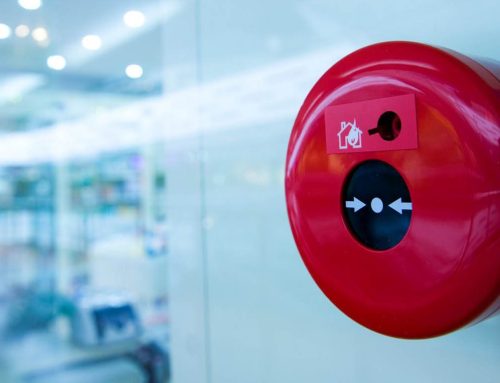As responsible business owners, it is our duty to ensure the safety of our employees, customers, and property. One of the most critical safety measures we can implement in our workplaces is having a comprehensive fire safety plan. In this article, we will discuss the importance of having a fire safety plan in the workplace, what should be included in a fire safety plan, and how to create and implement one effectively.
Why is a Fire Safety Plan Necessary?
Fires can happen at any time, and the consequences can be devastating. A fire can cause property damage, injuries, and even fatalities. By having a fire safety plan in place, we can minimize the risk of a fire occurring, and if a fire does happen, we can ensure that our employees and customers can evacuate safely and efficiently.
What Should Be Included in a Fire Safety Plan?
A fire safety plan should be a comprehensive document that outlines the procedures to be followed in case of a fire.
It should include the following:
- Emergency Contact Information
The fire safety plan should include a list of emergency contact information, including the local fire department, the police department, and any other relevant emergency services.
- Evacuation Routes
The plan should include a map of the building that shows the primary and secondary evacuation routes. The map should be posted in visible locations throughout the building.
- Fire Suppression Equipment
The fire safety plan should include a list of all fire suppression equipment, such as fire extinguishers, fire hoses, and sprinkler systems, and their locations.
- Staff Roles and Responsibilities
The plan should specify the roles and responsibilities of the staff during a fire emergency. This includes who is responsible for calling the emergency services, who is responsible for ensuring that all staff and customers evacuate safely, and who is responsible for checking that all areas of the building are clear.
How to Create and Implement a Fire Safety Plan
Creating and implementing a fire safety plan involves several steps:
- Conduct a Risk Assessment
The first step in creating a fire safety plan is to conduct a risk assessment of the building. This involves identifying potential fire hazards, such as flammable materials and faulty electrical equipment, and assessing the risk of these hazards causing a fire.
- Develop the Fire Safety Plan
Based on the risk assessment, a fire safety plan should be developed that includes all the information outlined in section 2 above.
- Train Staff
All staff should be trained on the fire safety plan and their roles and responsibilities during a fire emergency. This training should include regular fire drills to ensure that everyone is familiar with the evacuation routes and procedures.
- Review and Update the Plan
The fire safety plan should be reviewed and updated regularly, at least once a year, to ensure that it remains current and effective.
FAQs
What is the Penalty for Not Having a Fire Safety Plan?
The penalty for not having a fire safety plan varies depending on the jurisdiction, but it can include fines and even criminal charges in severe cases.
How Often Should Fire Drills be Conducted?
Fire drills should be conducted at least twice a year, but more frequent drills may be necessary for high-risk buildings or businesses with high turnover rates.
Can You Conduct Fire Drills During Business Hours?
Yes, fire drills can be conducted during business hours, but they should be planned in a way that minimizes disruption to the business.
What Should You Do if You Discover a Fire?
If you discover a fire, immediately activate the fire alarm and call the emergency services. If it is safe to do so, use a fire extinguisher or other fire suppression equipment to try to extinguish the fire, but only if you have been trained to do so and if it is safe to do. Do not attempt to fight the fire if it is too large or spreading too quickly. Evacuate the building immediately following the evacuation routes outlined in the fire safety plan.
Can You Use Elevators During a Fire Emergency?
No, you should not use elevators during a fire emergency. Elevators can malfunction during a fire, and the trapped occupants can suffer serious injuries or death. Always use the stairs to evacuate the building.
EFE Fire & Electrical Ltd. is committed to providing top-notch fire safety training and fire warden training for businesses of all sizes. Our expert trainers deliver high-quality courses that are tailored to your specific needs, ensuring that your staff is equipped with the knowledge and skills necessary to prevent fires and respond effectively in case of an emergency. With our comprehensive training programs, you can feel confident that your business is prepared to handle any fire-related situation.
Contact us today to learn more about our training options and how we can help you ensure the safety of your employees and property.






